President Jackson bade farewell to the country at the conclusion of his second term in 1837 and returned to Tennessee to live out his days at the Hermitage, surrounded by family and friends. Even in retirement, the old general—he is said to have preferred that title to president—remained a potent symbol in national politics, and his name and image were often invoked by Democrats against Whig opponents.
Statesmen and foreign dignitaries journeyed to the Hermitage to pay their respects. Yet Jackson’s otherwise quiet retirement was troubled by financial crises and failing health. The failure of his cotton crop in 1841 obliged Jackson to rely on the generosity of his old friends, including Jean Baptiste Plauché, who had served with the general at New Orleans.
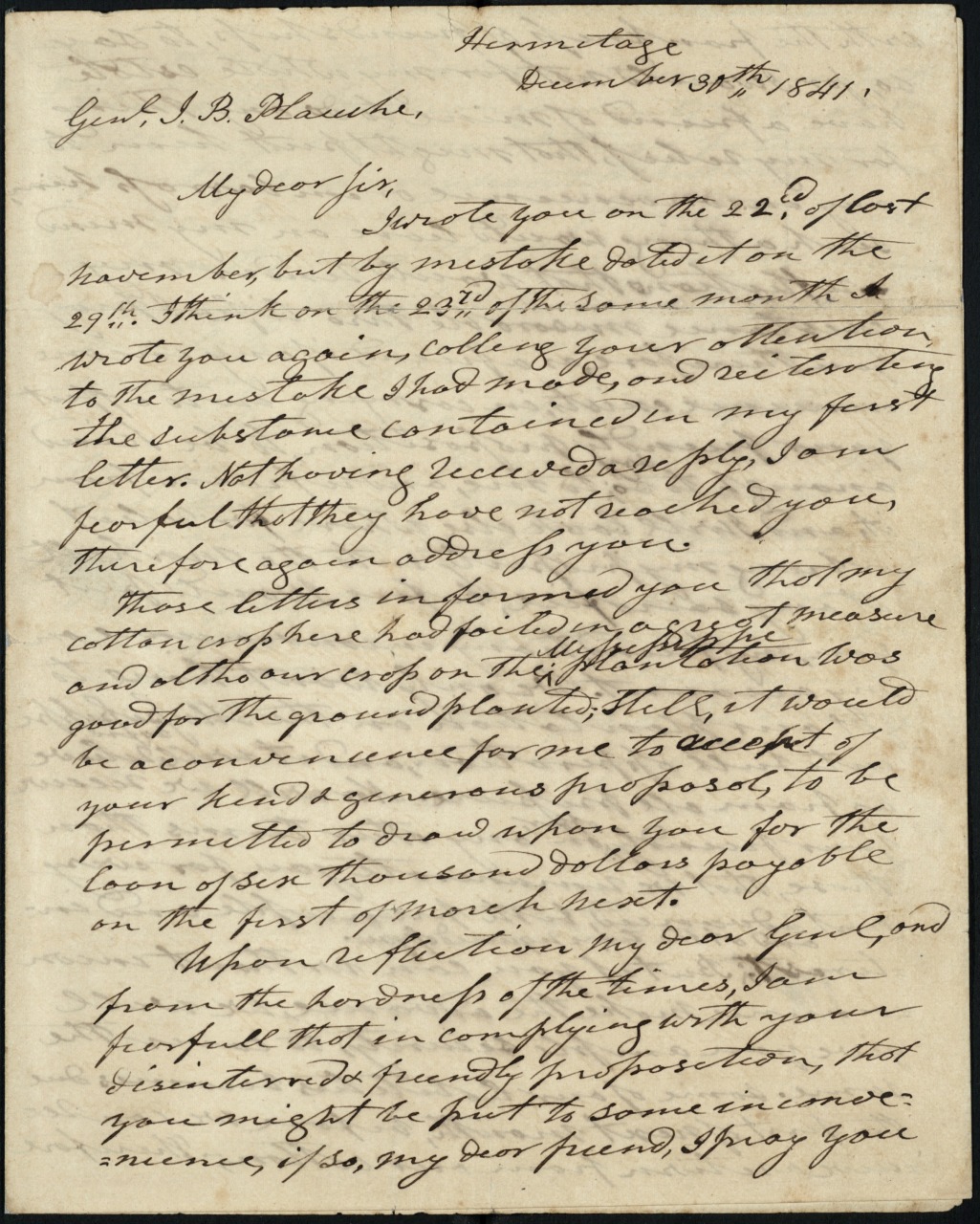
Letter from Andrew Jackson to Jean Baptiste Plauché regarding a loan
December 21, 1841; manuscript letter
The Historic New Orleans Collection, MSS 696, 2013.0404
After the cotton crop failed at Jackson's plantation in Mississippi, he found himself on the brink of financial ruin. Only a timely loan of $6,000 from his old Louisiana friend Jean Baptiste Plauché, who served with Jackson at the Battle of New Orleans, saved the former president from bankruptcy. The loan would amount to about $150,000 in today's currency.
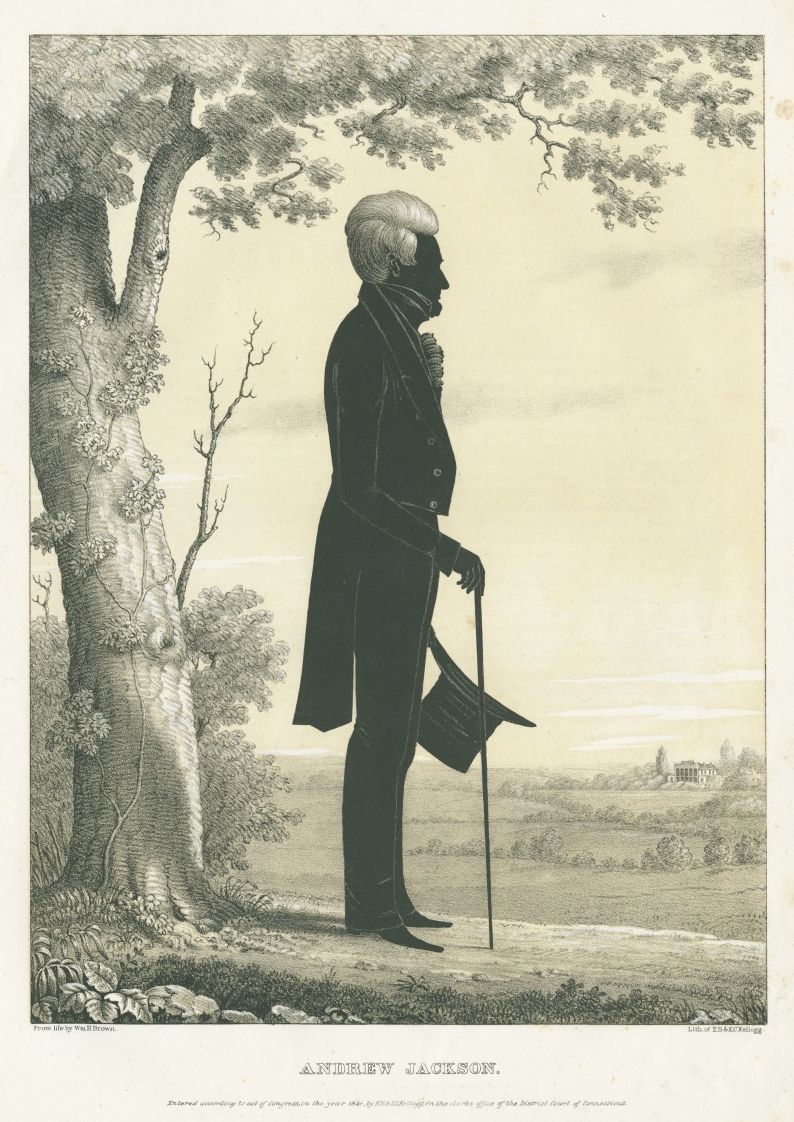
Silhouette of Andrew Jackson
1843; color lithograph
by William Henry Brown, artist; E. B. and E. C. Kellogg Company, lithographer
The Historic New Orleans Collection, 1972.23 a–c
The retired general and president is shown on the grounds of his plantation home, the Hermitage, perhaps contemplating his legacy. Jackson remained a popular subject for artists even after his retirement from public life.
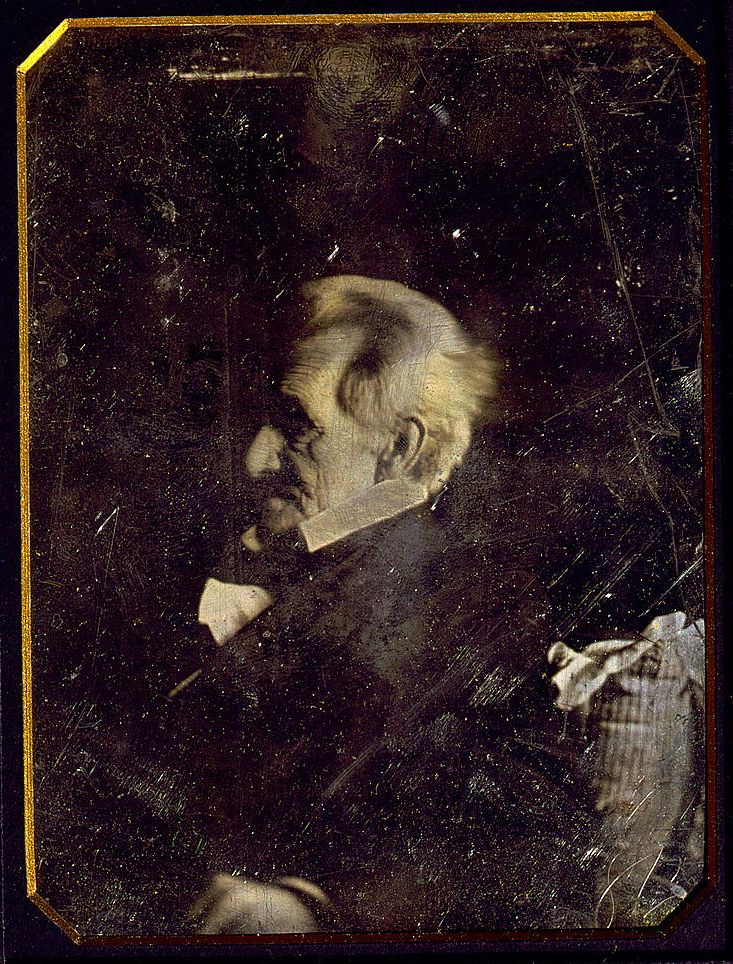
Photograph of Andrew Jackson
1844 or 1845; copy half-plate gold-tone daguerreotype
original attributed to Edward Anthony, photographer; copy from Mathew Brady Studio, maker
courtesy of Library of Congress, Prints and Photographs Division, LC DAG no. 110
Andrew Jackson was the second American president to be photographed. John Quincy Adams was the first. This image was captured at the Hermitage in Jackson's last months. Weakened by chronic illness, Old Hickory had to be propped upright by pillows.
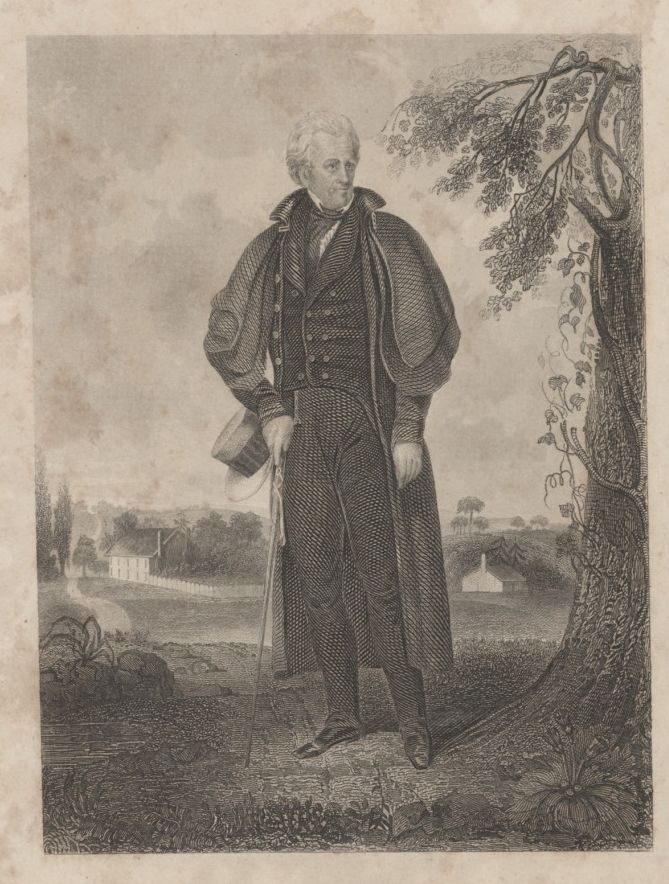
Andrew Jackson
ca. 1840; engraving
by an unknown engraver; after Ralph E. W. Earle, artist
The Historic New Orleans Collection, 2008.0144.1
This small print is based on an 1830 original portrait of Jackson by Ralph E. W. Earl that was first copied and printed by John H. Bufford in Boston in 1833 and again by J. F. E. Prud'homme circa 1839. This version is different from Bufford's and Prud'homme's in some details.
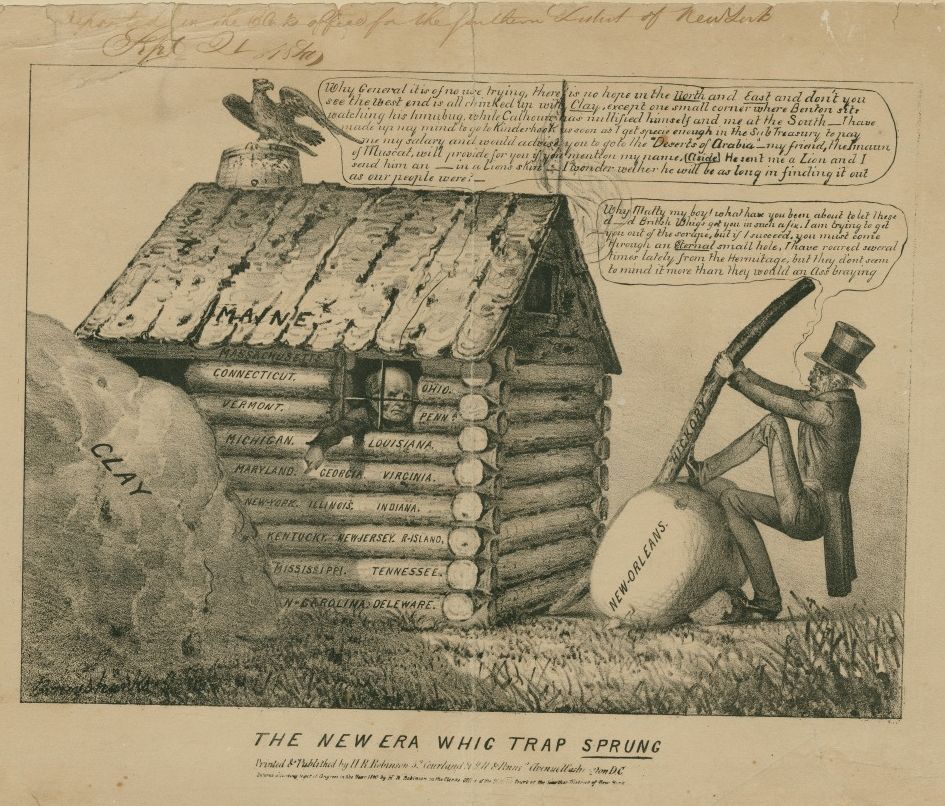
The New Era Whig Trap Sprung
1840; lithograph
by Henry R. Robinson, publisher
The Historic New Orleans Collection, 1959.211
This political cartoon depicts President Jackson's successor, Martin Van Buren, trapped by a log cabin jail representing the public preference for the more popular Whig candidate William Henry Harrison. Jackson strains to free Van Buren using a "hickory" lever and a cotton bale labeled "New Orleans," but the cabin is wedged in place by a mound of clay, representing Henry Clay.

General Andrew Jackson, The Hero, the Sage, and the Patriot
1845; hand colored lithograph
by Nathaniel Currier, lithographer and publisher
The Historic New Orleans Collection, 1980.118
